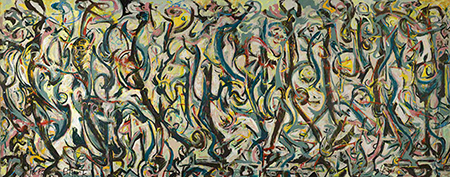
Today there is much dialogue about curatorial practice, which often involves a curator organizing exhibitions based around some idea or theory. In this regard, I consider myself "old school." While I do possess personal criteria for making curatorial choices, the exhibitions I have organized over the years have rarely been generated by any desire to posit or prove a theory. Instead, they have stemmed from my observations of what I see going on in contemporary art.
In the early 1980s while teaching at Scripps College and working as Assistant Director of the Galleries of the Claremont Colleges, I began noticing that a lot of artists were making triptychs. Some were abstract, some were related to Old Master prototypes, some had to do with sequencing. So I took on the topic and presented the exhibition using works by Los Angeles artists. My practice consisted of visiting galleries and studios, then talking with artists about their work. It also involved analyzing what I found, cataloguing it, and interpreting and contextualizing it in the catalogue. Once I completed the project I realized, too, that it was the third in a sequence of projects that correlated to the numbers one, two, and three. I recognized retroactively that I had created my own curatorial triptych.
In my graduate research for Harvard University, I had been working on the connections between automatism and the origins of Abstract Expressionism. My studies revolved around the efforts of Roberto Matta Echaurren to form his own group and become the new Andre Bretón in early 1940s New York. While this did not happen, he nevertheless became a huge influence on Jackson Pollock, William Baziotes, Robert Motherwell, and other artists who participated in group automatic drawing sessions at Matta's home. The artists' quest, of course, was to make visible in art the content their unconscious. I documented my research on the topic in an article on Jackson Pollock (Arts Magazine, March 1979). Like many New York School figures, these artists were preoccupied with representing the self, which in context of my two subsequent projects, can be tied to the number one.
The next project was handed to me on a platter, and I am forever indebted to David Steadman, who, as the Director of the Galleries of the Claremont Colleges, was my mentor. David had come up with the idea of doing an exhibition on black and white painting. He even had a great title, "Black and White are Colors." Yet, as a generous mentor, he handed the project over to me, even though we were both recognized as co-curators. The exhibition, held in the galleries at both Scripps and Pomona Colleges in 1979, featured a mix of nationally known and locally recognized artists — among them Willem DeKooning, Jackson Pollock, Franz Kline, Ellsworth Kelly, Al Held and L.A. participants Lorser Feitelson, John McLaughlin, Karl Benjamin, Joe Goode, and Martha Alf. From an intellectual standpoint, it was a meaty subject and in the catalogue essay, I wrote quite a bit about "duality," hence the number two.
So it was an unconscious logic that, in part, led me to move on to the number three with "Contemporary Triptychs.” And from there it would take nine years until I would find myself in a position with ample space and budget to realize the number four. That exhibition, entitled "Cruciformed: Images of the Cross since 1980," took place in 1991 at Cleveland Center for Contemporary Art (now MOCA Cleveland), where I served as Associate Director/Chief Curator from 1990-94. Beginning around 1984 or so, I had been saving mailers with cruciform imagery, and there was a lot of variety. Jim Morphesis and Peter Liashkov, both of whom were featured in my 1985 exhibition at the San Francisco Art Institute, "Concerning the Spiritual: The Eighties", were among the first artists to enter my files. By the time I mounted the exhibition, I had added a great number of artists working in a vast range of approaches — from the abstractions of Arnulf Reiner, Harvey Quaytman and John Torreano, to the potent and socially conscious images of Andres Serrano, David Wojnarowicz, Joel-Peter Witkin and Edward and Nancy Reddin Kienholz. "Cruciformed" also, as it turned out, became the first component in my second curatorial triptych, which I will discuss in my next column.
[Note — Rubin recently resigned his position as Curator at the San Antonio Museum of Art — Ed.]
